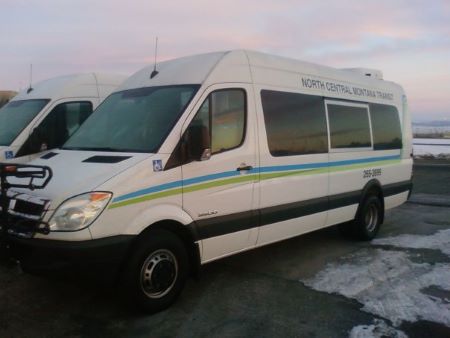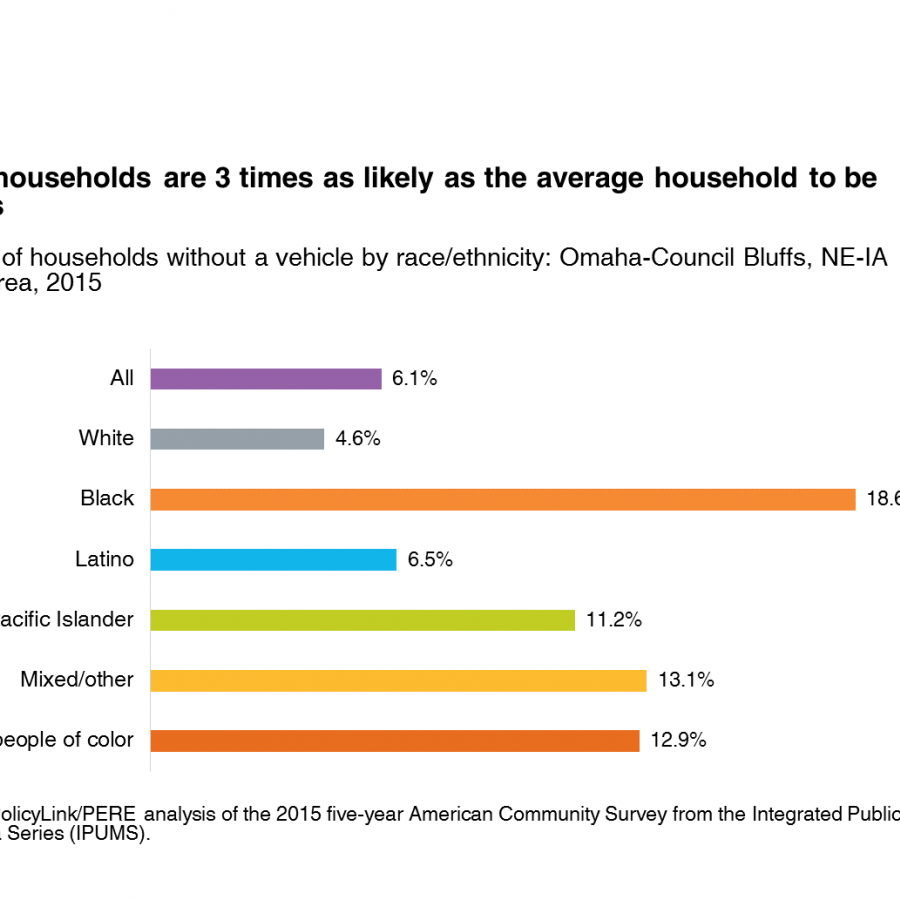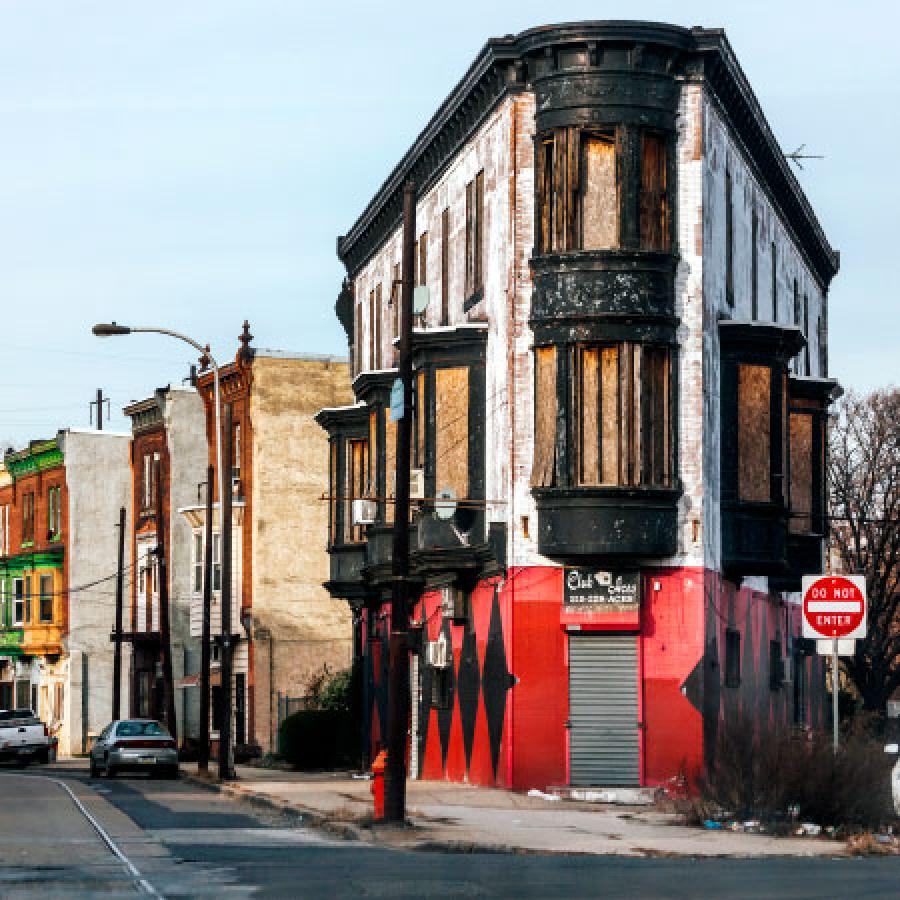Car access: Everyone needs reliable transportation access and in most American communities that means a car.
Insights & Analyses
- Nationwide, households headed by people of color are less likely than white households to have access to a vehicle. The percentage lacking access to a vehicle is highest among Black households at 17 percent (2.55 million households).
- Households living below 200 percent of the federal poverty are much more likely to lack car access (19 percent), compared with those living at or above 200 percent of the poverty level (5 percent).
- Female-headed households are less likely than male-headed households to have access to a vehicle for all racial and ethnic groups identified by the census, except for Native American households, for which the rates of being carless are similar (13 percent).
- Asian American, Latinx, Pacific Islander, and white immigrant households are less likely to have access to a vehicle compared to their US-born counterparts.
- At 50 percent, Native American households headed by those with Other Alaskan ancestry are the most likely to lack access to a vehicle out of all ancestry groups for all nativity breakdowns.
Drivers of Inequity
Income and wealth disparities have caused people of color in the US to have less access to vehicles than white people. Racial segregation forged through the expropriation of land from Indigenous people and racially discriminatory practices such as redlining dispossessed communities of color and excluded them from economic prosperity. As a result, people of color are more likely to experience poverty and lack generational wealth than their white counterparts. This trend, along with racially discriminatory pricing for auto loans and car insurance, makes car ownership more costly and drives inequities in car access between white people and people of color.
Strategies
Grow an equitable economy: Policies to ensure everyone can connect to opportunity
- Build robust public transit systems including buses, bus rapid transit, and shared mobility options that connect low-income communities to jobs, education and training opportunities, and services.
- Create transit-oriented developments (TODs) in ways that expand affordability and access for low-income residents and prevent displacement of both people and small businesses.
- Expand transit options in rural communities, including van pools, shuttles, low-income car ownership programs, and bus routes.
- Make driver’s licenses available for all drivers regardless of immigration status.
- At the federal level, invest in public transportation infrastructure in high-need communities and cap interest rates on predatory car title loans.
Strategy in Action
Transit initiative increases mobility in North Central Montana. In the Great Plains area in Northern Montana, many people live dozens of miles away from jobs, schools, grocery stores, and hospitals but lack access to a vehicle. Additionally, transportation is the largest living expense for the majority of households in the state. Recognizing the need for accessible transportation, Opportunity Link, along with local and tribal government agencies, built the North Central Montana Transit System in 2009. In its first year of operation, the North Central Montana Transit bus system served over 18,000 riders. In 2023, the system included 11 vehicles in their fleet with four regional bus routes and provided coordinated service with neighboring regional transit systems. They also provide free transportation to polling places on election days and pick-up and drop-off service for Boys and Girls Club members during the summer. Read more.

Resources
- Reports: Measures Matter: Ensuring Equitable Implementation of Los Angeles County Measures M & A; Those Who Need it Most: Maximizing Transit Accessibility and Removing Barriers to Employment in Areas of Concentrated Poverty; Too Far from Jobs: Spatial Mismatch and Hourly Workers; TransitCenter; Transportation Equity Caucus
- Data: The H+T® Affordability Index; All Transit


